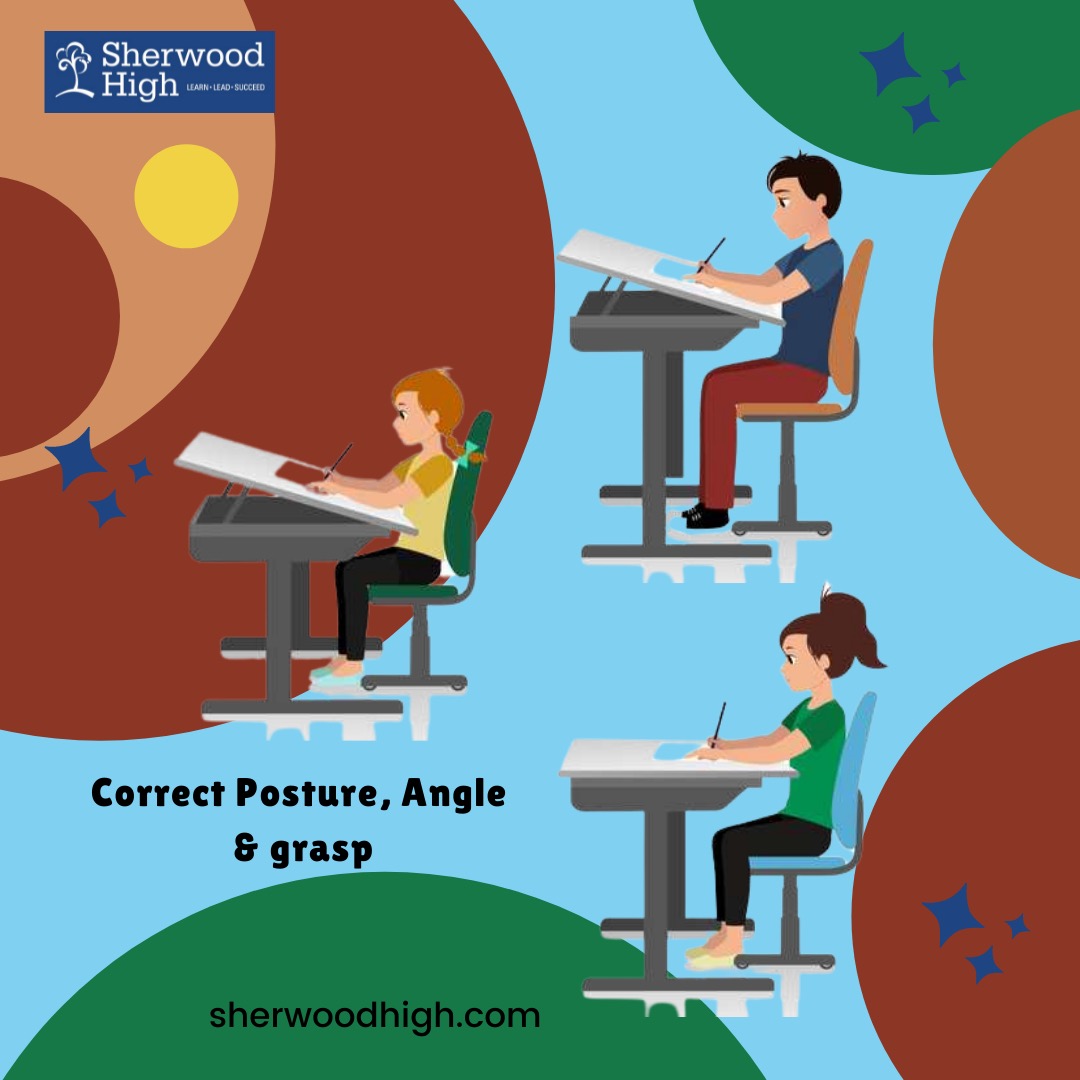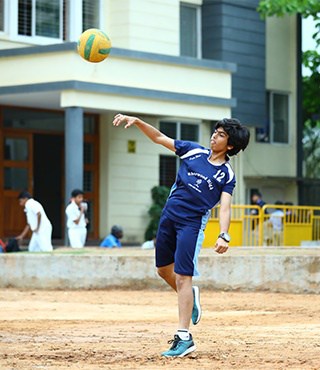

Five Ways to Improve Your Child’s Handwriting.
Five Ways to Improve Your Child’s Handwriting.
Have you heard of ways to improve handwriting without actually writing?
Well… Do you want to know how?
Let’s talk about what are the issues that lead to bad handwriting first.
The problem begins with the way of holding a pencil. If children do not hold the pencil properly, they will not be able to write legibly. If their writing is not legible, they cannot convey their thoughts and ideas accurately or score well.
At Sherwood High, we believe that good handwriting contributes to reading fluency and is a predecessor of success in their subjects, because good handwriting has a positive impact on grades.
Many researchers have concluded that both handwriting and drawing involves more sensory experience, opening up the brain for further learning. “When handwriting, fine and precise hand movements are involved, and this sensory-motor integration, the larger involvement of the senses, is beneficial for learning,” Askvik explains.
We believe that good handwriting is a skill that will develop when the foundation for it is strong. Hence, we will look at ways to improve your child’s handwriting on this blog.
So the first step in improving handwriting is to perform hand strengthening activities to strengthen the muscles. Especially 5 to 10-year-old children may find it difficult, as weak muscle coordination will lead to poor handwriting. So there is no point in reprimanding children for practicing handwriting endlessly every day, as this may lead them to lose interest and feel exhausted.
The Internet is full of hand strengthening activities. These activities help the children to hold the pencil better. So, when they grasp the pencil well and try writing, the words form neatly and legibly. Children’s hand strengthening activities are very straightforward using some simple props available at home.


The following activities are helpful to strengthen hand muscles:
Rubber Band Activity:
Take four rubber bands, put the finger inside the rubber band at both the ends. Ask children to push and pull the bands. This activity strengthens children’s fingers.
Clay Activity:
You can buy some simple play dough or you can even make some kneadable flour mixture, using any flour available at home. Give the children either the clay or flour dough to roll random shapes they like or make some specifically instructed shapes out of it. When they squeeze and roll the dough, the activity strengthens their hand muscles.
Drop by drop:
Give your child an ink filler and 2 jars; one with water and another empty. Ask them to transfer water from one jar to another in drops. This will help children with their pincer grasp, laying the foundation for a good pencil grip, which is essential for good handwriting.
Ways to help Improve your child’s Handwriting:
1.Motivation:
You may feel we say this in almost all our blogs, but believe us when we say this, the right motivation does wonders to the human mind. Positive affirmations bring positive outcomes. When your child attempts to write something, give them your feedback and appreciate them for their efforts. It doesn’t matter whether it is good or bad. All you have to do is to make them believe that they are capable of writing well.
When you constantly criticize them for not writing well, or according to your expectation, they get demotivated. This may lead the child to think that they are not good enough. There is an old town example for this, it is said that when an elephant is still young, people keep it chained to keep the elephant from wandering away or getting lost. Though it tries to break the chain initially, and fails constantly, it starts to believe that it cannot break the chain, and never tries to break it even after it grows powerful enough to break free.
So remember to never let your child think that they’re incapable of something that can be learnt either right away or in due time.
2. Practice:


Don’t we all already know, “Practice makes perfect”!
Help children practice handwriting whenever possible. When children practice something consistently, they master that skill. Handwriting is a person’s personal style of writing, and though there are many types of writing, initially we teach children two major types of writing, which are print and cursive.
They learn print letters first using a workbook or tracing book. Once they master the print letters, we teach them cursive. Print letters are slow writing words, which are called disconnected words or block words. cursive letters are fast writing words which are joint letters with free-flowing writing. While one may feel cursive is harder and might require more practice, it is with print that we set their foundation for writing. So practicing both the forms is essential for a legible handwriting.
3.Posture, Angle and grasp:
Good handwriting comes with correct posture. Correct sitting posture, the right angle and a good grasp or hold of a pencil are two of the most important prerequisites for good handwriting.
When children sit comfortably, they write in a better mood without getting distracted by any discomfort. The correct writing position is to sit straight on the floor or on a chair, with their bodies straight without hunching over their books. Provide them with a convenient table and chair with ample light, and make sure the chair has back support. This helps to write at ease and in a comfortable position.
Holding a pencil correctly or grasping a pen properly will help children write well and give them a smooth writing. Though there are four types of grasps, the static tripod or quadruped grasp and dynamic tripod grasps help children exceptionally well in improving their handwriting. Introducing the correct sitting posture along with the appropriate grasps and practicing handwriting from 3 ½ years to 4 years will help the children have a good foundation in writing.
4.Use Correct Letter Size, Alignment and Spacing:
After children develop accurate letter formation and construction, they need to be taught to keep their writing within a designated space, along with learning how to size their letters properly. When children are initially exposed to handwriting activities, they may have to be taught to practice writing large letters taking up the entire page. As kids grow up, they hone this skill and learn how to use the lines on the page to guide them with the correct size of letters for their writing. It is further later that they learn about another dimension of letter sizing as they learn about tall, short, and tail letters.
As correct letter sizing closely relates to alignment, this skill also emerges age appropriately, as kids practice writing as and how they grow.
Once children become grown enough to read more confidently, they have a better sense of where one word should end and where the next word should begin, coinciding with the ability to have an apt spacing between their words.


5. Refrain from Applying Excessive Pressure:
You need to closely monitor your child’s writing, to check if there is a strong imprint on the next page of their book or pad. If yes, then it means that your child is applying under pressure on the pencil, which could be because of excessive stress.
This undue pressure is unhealthy for your child, even if the handwriting turns out to be tidy. Help your child break free from the stressor, and then help them hold the pencil calmly and try writing again.
This is especially important as this kind of unrequited pressure could lead to finger cramping and eyesight issues in the long run.
Conclusion:
Handwriting is a complex skill, as is not just about putting pencil to paper, it’s coordination and multi-tasking!
So understand that every child learns and that every child has potential, while some take a little longer than the others.
Try to figure out if there are any underlying reasons for the poor writing. For Example: some kids write illegibly to cover up their mistakes, like spelling mistakes or a grammatical error. So, at times like these, pushing children to improve their handwriting skills alone won’t help. It would be best to find a solution to these underlying problems without belittling the child.
Though we all understand that children have low attention spans, as parents and caregivers, we must find alternative ways to keep them interested.
Remember that patience is virtue, and it plays a major role in the handwriting-honing process.






